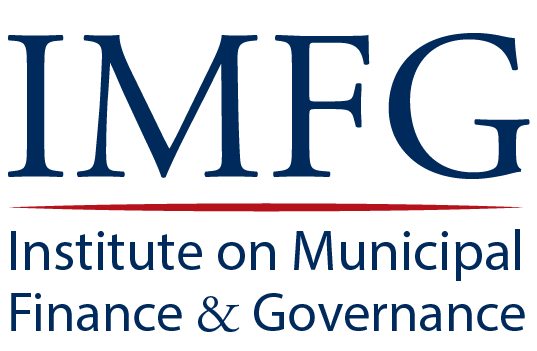Sometimes, the simplest questions are the hardest to answer. Take what seems like a basic question about Canadian government: “Who does what?” One might assume that the role of municipalities in the federation was settled long ago. Yet as I’ve discovered while co-editing the Institute on Municipal Finance and Governance’s (IMFG) Who Does What research series, the answers are anything but straightforward.
Who funds social housing? How many cities run their own transit agencies? How much control do city councils have over their local police forces? What actions are local governments taking to combat climate change? How much influence do municipal leaders have over immigration? These are questions I frequently hear from students in my local government and urban policy classes. And I must confess, for years, I’ve struggled to provide simple answers. It’s not always clear how local governments fit within the puzzle of Canadian federalism.
IMFG’s Who Does What series illuminates these questions in two ways. First, the papers map out the current role local governments play in decision-making, funding, delivery, and oversight of critical public services, including areas of intergovernmental conflict. Second, the authors ask not only “who does what,” but also “who should do what?” – identifying where municipalities should lead and where they should take a back seat.
So far, IMFG has published nine reports in the series, covering housing, economic development, climate, public health, policing, transportation, long-term care, child care, and immigration, with contributions from 18 leading academics and 26 policy practitioners from across Canada.[1] Each paper begins with a brief backgrounder, co-authored with students from the Munk School’s Urban Policy Lab, which sets the stage for essays by experts who propose policy prescriptions and reforms. Two additional reports, focusing on mental health and Indigenous governance, are on the horizon.
In many ways, the series is a throwback to the 1990s Who Does What Panel convened by the Government of Ontario, originally intended to “disentangle” public services by identifying areas in which municipalities could manage their own affairs. IMFG Director Enid Slack was a member of that original panel, and I vividly recall her reaction when I suggested reviving the idea: “I’d really rather not.” I don’t blame her. Many of the panel’s proposals were ignored or rejected by the Progressive Conservative government of the day, which instead implemented a Local Services Realignment process that led to widespread – and inappropriate – downloading of social service responsibilities to municipalities.
Years later, Enid and I, along with former IMFG program manager Tomas Hachard, co-authored a report on provincial-municipal relations for the Ontario 360 initiative, in which we analyzed cost-sharing arrangements between the Government of Ontario and its 444 municipalities across 15 service areas.[2] While reviewing our findings, it became clear that, despite Enid’s reservations, the time had come to once again attempt to clarify lines of accountability. We also wanted to know whether provincial-municipal “entanglement” was a specifically Ontarian problem, or whether the same patterns extended across the country.
When we began planning the series in 2021, a year into the COVID-19 pandemic, governments at all levels were grappling with intersecting crises. Intergovernmental collaboration was high, bolstered by a “Team Canada” approach. The federal government had recently launched the Rapid Housing Initiative, providing direct financial support to municipalities to build emergency housing; the Government of Ontario was working closely with local public health units to coordinate vaccination drives; and municipalities across the country were aligning municipal bylaws related to masking and proof of vaccination.
This exceptional degree of cooperation seemed like an opportune moment to explore the boundaries of federal-provincial-municipal coordination and consider whether municipalities were evolving from their traditional role as “policy takers” to becoming policy makers. We set to work identifying a list of key policy areas covering:
- current crises (public health, housing, climate change, mental health and addictions);
- traditional municipal priorities (transportation, policing, economic development);
- emerging areas of municipal concern (immigration, child care, long-term care, Indigenous governance).
We hoped to expand IMFG’s already substantial catalogue on municipal intergovernmental relations[3] by providing a useful resource for researchers, practitioners, and educators hoping to clarify the role of local governments across Canada. Prior IMFG research by Zack Taylor and Alec Dobson had outlined the extent of municipal powers across provinces and policy domains.[4] The Who Does What series would tell us more about the extent of municipal agency within these jurisdictional boundaries.
The series is not complete, but three themes have already emerged.
First, local governments play at least some role in every major policy area, although their exact responsibilities vary greatly across the country because of different legislative, regulatory, fiscal, and intergovernmental environments.
At one end of the spectrum, municipalities play a large role in economic development, transportation, and policing. Economic development remains a top priority for municipal leaders in cities large and small, through partnerships, planning initiatives, and support programs. Seven provinces delegate transportation systems, broadly defined, as a distinct sphere of municipal jurisdiction. And most medium-sized and large municipalities manage or operate their own local police forces.
At the other end of the spectrum, public health, long-term care, and child care services extend beyond the conventional scope of municipal responsibility. Outside Ontario, most local (or regional) public health units are managed and operated by provincial authorities without municipal involvement. Ontario is also the only province that legally requires municipalities to operate long-term care homes, and the only province that delegates formal responsibility for child care to local governments. Some provinces, such as Nova Scotia and Manitoba, permit municipalities to operate long-term care facilities, but these remain rare; only a handful of local governments have adopted strategies to help seniors “age in place.” Similarly, very few municipalities have their own child care policies, and even fewer operate their own child care centres, accounting for less than 1 percent of all regulated child care spaces.
In the remaining three policy domains – immigration, housing, and climate – municipal engagement is uneven. All major municipalities are involved to some degree in immigrant settlement and integration services, but only a few are active in immigrant attraction or retention. Québec municipalities are uniquely constrained by provincial “interculturalisme” and “francisation” policies meant to protect the French language and Québecois culture.
Similarly, all municipalities are responsible for land use planning, and building standards, crucial regulatory components of housing policy. But with the exception of Ontario (yet again), funding for new affordable housing projects, social housing units, and emergency shelters is either shared between municipal and provincial authorities (as in Québec and Alberta) or led entirely by provinces (as in British Columbia, Saskatchewan, Manitoba, and Nova Scotia).
The same pattern is evident with climate policy. More than 500 city councils have formally declared a climate emergency, but only the largest municipalities have adopted formal climate change strategies, and few, if any, have the fiscal resources to meet climate goals without provincial support.
The second emerging theme is that despite considerable variation and inconsistencies, most contributing authors expressed optimism that municipalities are capable of doing more, as long as provincial and federal governments offer the necessary support. On housing, for example, Carolyn Whitzman et al. advocate that municipalities can do more to acquire land and expedite approvals for non-profit and affordable housing. Likewise, Valerie Preston and John Shields recommend that municipalities be fully integrated into immigration governance structures, and Leann Hackman-Carty argues that municipalities are well positioned to serve as local champions for economic development.
Even in policy areas in which municipal involvement is currently limited, such as public health and long-term care, more municipal engagement is both possible and potentially desirable. Indeed, all six contributing authors to the child care report separately suggest that municipalities can and should take on a greater role as part of the landmark Canada-Wide Early Learning and Child Care program.
This brings us to a third and final theme: the need for greater intergovernmental collaboration and coordination. Although the authors have not reached a collective consensus on the precise role local governments should play in every policy area, all nine reports in the series emphasize the importance of greater cooperation, both vertically among orders of government, and horizontally among municipalities.
The need for cooperation is particularly apparent in housing policy, as Greg Suttor notes: municipalities need provincial and federal support to scale up social housing and affordable rental initiatives as well as foster metropolitan-scale partnerships to match the regional nature of housing markets. The same is true of economic development, in which Charles Conteh calls for a new form of “place-based” federalism to empower small and mid-sized municipalities, while Shauna Brail proposes a task force to improve intergovernmental coordination at the regional scale. Climate policy could also benefit from improved coordination: Elliott Cappell recommends the creation of a trilateral intergovernmental table, and Sadhu Johnston recommends provincial mandates to ensure effective regional land use and transportation planning.
Reflecting on these findings during IMFG’s 20th anniversary year, one might ask, has anything really changed over the past two decades? In many respects, the Who Does What series reminds us that municipal governments remain junior partners in the Canadian federation, routinely hamstrung by tight provincial control and derailed by shifts in federal priorities. Plus ça change…
In other respects, the intergovernmental landscape has changed markedly. Housing and homelessness, barely on the political agenda 20 years ago, are now top priorities. Climate policy, once seen as a strictly national concern, now focuses on local solutions. Public health and long-term care have gained traction as municipal concerns following the COVID-19 pandemic.
All told, the answer to “who does what?” is still being written. The role of local government in Canadian policy making is continually in flux, shaped by political negotiation, not constitutional law. As municipal responsibilities grow, these negotiations will require a new intergovernmental infrastructure to bring clarity and coherence to otherwise haphazard policy processes. Existing forums for intergovernmental dialogue will need to be adapted or redesigned to foster ongoing, productive exchange between municipal, provincial, and federal officials. But how? A crucial question to inspire another 20 years of IMFG research!
About the Author
Gabriel Eidelman is Assistant Professor, Teaching Stream, and Director of the Urban Policy Lab at the University of Toronto’s Munk School of Global Affairs and Public Policy, with a joint appointment at the Institute for Management and Innovation. He is an IMFG Faculty Fellow, co-editor of the Who Does What research series, and co-author of several IMFG reports as well as a 2011 recipient of Blanche and Sandy van Ginkel Graduate Fellowship in Municipal Finance and Governance.
Endnotes
[1] Thanks are also due to eight students: Kinza Riaz, Jason Adade, Ruth Rosalle, Chloe Hinds, Spencer Neufeld, Veda Jain-Allington, Rong Zhang, and Nick Pearce.
[2] Gabriel Eidelman, Tomas Hachard, and Enid Slack, In It Together: Clarifying Provincial-Municipal Responsibilities in Ontario, Ontario 360 initiative, University of Toronto, 2020.
[3] See Tomas Hachard, It Takes Three: Making Space for Cities in Canadian Federalism, IMFG Perspectives No. 31, 2020; Enid Slack and Tomas Hachard, Meeting in the Middle: How to Increase Cooperation and Get Provincial-Municipal Relations Right, Ontario 360 initiative, University of Toronto, 2022; Tomas Hachard, A Seat at the Table: Municipalities and Intergovernmental Relations in Canada, IMFG Papers on Municipal Finance and Governance No. 59, 2022.
[4] Zack Taylor and Alec Dobson, Power and Purpose: Canadian Municipal Law in Transition, IMFG Papers on Municipal Finance and Governance No. 47, 2020, page 8.
Footnote
Click to scroll to footnotes


